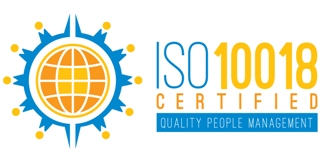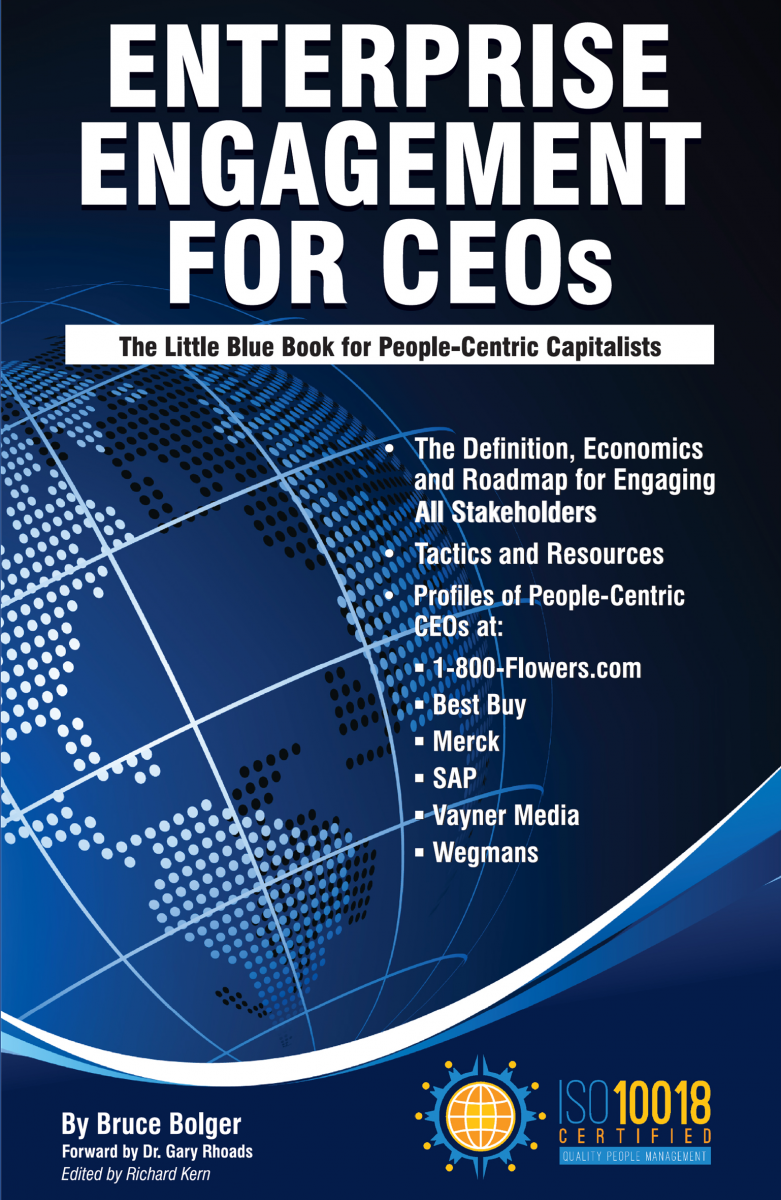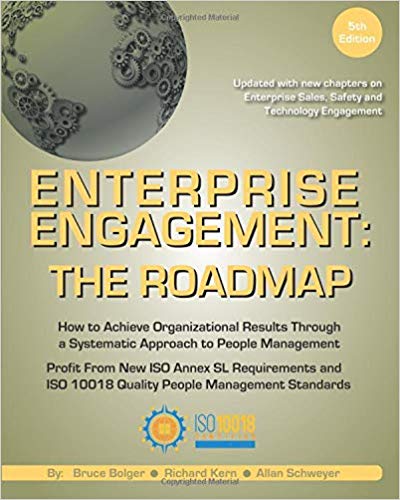Guest Analysis: The Importance of Mastery, Autonomy and Purpose
Employee engagement requires a focus on creating better workplace cultures that respect the individuality of people that go beyond the role of traditional incentive and recognition programs.
.jpg)
By Brittany Johnston
Director, Brand Strategy, EGR International
Incentives and rewards were used as early as the Industrial Revolution by many companies to address one of their biggest challenges: employee motivation. This strategy has been thought to increase productivity, as well as align workers with the mission of their company. As author Dan Pink says, employees become truly motivated when there is a synonymous relationship between mastery, autonomy and purpose. Only when you incorporate these three elements into your company’s day-to-day work processes will your company’s values align with your employees’ interests and goals.
Many managers still stress the importance of using incentives to better engage their employees. For most, this is the way it has always been done. However, with today’s seasoned workers and present economic challenges, most companies have come to ask themselves: Do traditional incentives still align with our employees’ true wants and needs? As workforces become more creative and self-motivated, many traditional types of incentives alone are no longer doing their part to motivate employees. The responsibility now is for companies to create better workplace cultures that develop their people as individuals.
Here are seven ways organizations can help employees become more connected with your brand and goals:
1. Share the vision and long-term goals of your company and brand.
In a recent study conducted by Entrepreneur magazine, “60% of employees didn’t know their company’s vision.” That is a problem, because many people want to value the purpose and principles of their companies. However, if those values aren’t made clear to them from the start, they often lose interest or become discouraged in their work. Promote your company’s vision and goals by ensuring they’re always visible and put into practice. Making the values of your brand a focal point and putting them in the hands of every employee, no matter their level, will help improve understanding of the brand and how each person can contribute to success. A few examples: develop Corporate Social Responsibility (CSR) or other activities that revolve around the organization’s unique culture, or have the CEO or high-level executive sign a small thank-you note to an employee who consistently and visibly demonstrates values aligned with the company.
2. Give employees individual attention.
Looking at your employees as individual people rather than a number relative to your bottom line has become essential. Motivating and retaining workers that believe in the work your company is doing only comes naturally when it’s clear they are valued. For this reason, keep your eyes open for ways to go above and beyond the expected. Providing one-on-one attention creates loyalty among your employees that’s hard to break and shows you care about life outside of work. Making time for the small things is also key. But how do managers at larger corporations make this happen with so many employees and so little time to spare? A simple conversation or acknowledgment communicates the message that employees are respected team members.
3. Offer clear opportunities for advancement and improvement.
One of the leading causes of employee turnover is a lack of clear paths for advancement and overall career growth within the company. When you set clear, concise (and realistic) expectations for employees, they can see a clearer path to meet and exceed them. According to the Harvard Business Review, “some managers neglect to think about what an employee is personally trying to accomplish in the context of work.” To prevent this, routinely and consistently ask employees what personal goals they have. Finding the common ground between their intrinsic values and the goals of your business will allow them to find more ownership or autonomy in their work. You can then find areas that can be adjusted to meet their goals and, in the end, benefit both parties to create a more harmonious relationship.
4. Create an inspiring work environment.
Among the top factors that influence performance at work is the space in which people work and develop ideas. Give employees the freedom to try working remotely from a different location for a trial and you’re likely to see a sharp increase in productivity. Another method that works either in a remote work or traditional office environment is offering people the ability to work during their peak productivity hours; for some employees this could be 6:00 am to 2:00 pm, while for others, it might be 10:30 am to 6:30 pm. Open the door to these possibilities and watch the positive results flow in.
5. Present formal opportunities to talk about new ideas and methods.
Successful companies want all employees to utilize their creativity and innovation to formulate the best solutions to business challenges. But it’s difficult to innovate when employees end up having to operate under the premise of: “This is the way it has always been done and this is how it will stay.” To prevent this syndrome, start by defining the boundaries for creative risk-taking and encourage your employees to think outside the box, then actually implement a strategy. Help them by generating “big picture” questions to find the root of business challenges such as, “What if…?” and “How come…?” According to an article in Fortune magazine, “Scenario planning and pre-imagining ethical challenges put you one step ahead when real problems arise.” If any employees are reluctant to think creatively, try telling them to start with tasks that appear to have smaller risks to help them step outside their comfort zone. In the end, they’ll feel like their opinion matters (which it does) and be a part of something bigger to contribute to your organization’s success.
6. Hold less formal team-based events.
Creating opportunities to get away from work also helps to create a sense of community and purpose for your employees. While productivity is always important, people benefit when they step away and have room to think. According to and article in Inc. magazine, how you shape your work environment has a major effect on your team’s mentality. Utilize outside gatherings, parties, group activities, volunteering, or group lunches to give your employees a chance to socialize or recharge. Even something as simple as a group dining experience can help your employees form friendships that make work more enjoyable. The stronger the bond your employees have with each other, the more they’re emboldened to share their thoughts, insights and ideas with other departments at all levels. This will also create an “open door” culture that helps your company function more seamlessly when problems do arise. Creating that sense of overall belonging plays a vital part in developing your employees’ motivation.
7. Lead by example.
Out of everything you can do to improve your employees’ motivation, being a leader in your company (no matter your level) can help create a lasting effect on the overall mentality of your workplace. Staying optimistic in the face of failure or when unexpected deadlines creep up without warning can show people how to act during periods of change or adjustment. Any employee will find more purpose and motivation working for a company that aims to conduct business in an orderly, well-thought-out fashion and that values quality over quantity. Observing what works best for your company and paying close attention to the leadership qualities employees look for in a manager can greatly affect their behavior.
More than ever, it’s important to give your employees the sense of purpose, autonomy and mastery they so eagerly desire from their jobs. Taking a systematic approach to the implementation of these practices in your business will help you retain and motivate the type of employees you seek. Ultimately, these practices will make a lasting impression on those who engage with your business and make them more likely to buy into your company’s mission.egr
For information about EGR International:
Jenni Smith
Vice President, Strategy and Business Intelligence
212-949-2294
Master the Principles of Enterprise Engagement to Achieve Organizational Goals and Enhance Your Career
- Profit from a new strategic and systematic approach to engagement to enhance your organization’s brand equity; increase sales, productivity, quality, innovation, and safety, and reduce risks.
- Get trained to become a Chief Engagement Officer for your organization.
- Achieve ISO 10018 Quality People Management Certification to demonstrate your organization’s strategic commitment to people to your customers, employees, distribution partners, vendors, communities, investors, and regulators.
- Learn how to create Sustainability or Integrated Reports for Your Organization or Clients.
- Get up-to-speed on ISO human resources standards and guidelines to enhance HR performance.
Live Education: Enterprise Engagement in Action. Take advantage of a three-hour customized webinar for individuals or teams on all aspects of Enterprise Engagement, including the definition, economics, implementation framework, return on investment, ISO quality people management standards, as well as preparation for Certified and Advanced Engagement Practitioner status.
ICEE periodically runs regional one-day workshops on ISO 10018 Quality People Management principles and certification. Stay tuned for upcoming date.
In Print:
In Print:
Written specifically to provide CEOs and their leadership teams a concise overview of the framework, economics, and implementation process of a CEO-led strategic and systematic approach to achieving success through people. (123 pages, $15.99)
The first and most comprehensive book on Enterprise Engagement and the new ISO 9001 and ISO 10018 quality people management standards. Includes 36 chapters detailing how to better integrate and align engagement efforts across the enterprise. (312 pages, $36.)
Online: The Enterprise Engagement Academy at EEA.tmlu.org, providing the only formal training on Enterprise Engagement and the new ISO 9001 and ISO 10018 quality people management standards. Provides preparation for professionals to support organizations seeking ISO 10018 employer or solution provider certification, as well as elective courses on Trade Show Engagement, Rewards and Recognition, Government, and other topics.
Plus:
10-minute short course: click here for a 10-minute introduction to Enterprise Engagement and ISO standards on Coggno.com.
10-minute short course: click here for a 10-minute introduction to Enterprise Engagement and ISO standards on Coggno.com.
5-minute Audiopedia summary of the Enterprise Engagement field.
 Services: The International Center for Enterprise Engagement at TheICEE.org, offering: ISO 10018 certification for employers, solution providers, and Enterprise Engagement technology platforms; Human Resources and Human Capital audits for organizations seeking to benchmark their practices and related Advisory services for the hospitality field.
Services: The International Center for Enterprise Engagement at TheICEE.org, offering: ISO 10018 certification for employers, solution providers, and Enterprise Engagement technology platforms; Human Resources and Human Capital audits for organizations seeking to benchmark their practices and related Advisory services for the hospitality field.
The Engagement Agency at EngagementAgency.net, offering: complete support services for employers, solution providers, and technology firms seeking to profit from formal engagement practices for themselves or their clients, including Brand and Capability audits for solution providers to make sure their products and services are up to date.
C-Suite Advisory Service—Education of boards, investors, and C-suite executives on the economics, framework, and implementation processes of Enterprise Engagement.
Speakers Bureau—Select the right speaker on any aspect of engagement for your next event.
Mergers and Acquisitions. The Engagement Agency’s Mergers and Acquisition group is aware of multiple companies seeking to purchase firms in the engagement field. Contact Michael Mazer in confidence if your company is potentially for sale at 303-320-3777.
Mergers and Acquisitions. The Engagement Agency’s Mergers and Acquisition group is aware of multiple companies seeking to purchase firms in the engagement field. Contact Michael Mazer in confidence if your company is potentially for sale at 303-320-3777.
Enterprise Engagement Benchmark Tools: The Enterprise Engagement Alliance offers three tools to help organizations profit from Engagement. Click here to access the tools.
• ROI of Engagement Calculator. Use this tool to determine the potential return-on-investment of an engagement strategy.
• EE Benchmark Indicator. Confidentially benchmark your organization’s Enterprise Engagement practices against organizations and best practices.
• Compare Your Company’s Level of Engagement. Quickly compare your organization’s level of engagement to those of others based on the same criteria as the EEA’s Engaged Company Stock Index.
• Gauge Your Personal Level of Engagement. This survey, donated by Horsepower, enables individuals to gauge their own personal levels of engagement.
For more information, contact Bruce Bolger at Bolger@TheEEA.org, 914-591-7600, ext. 230.
















